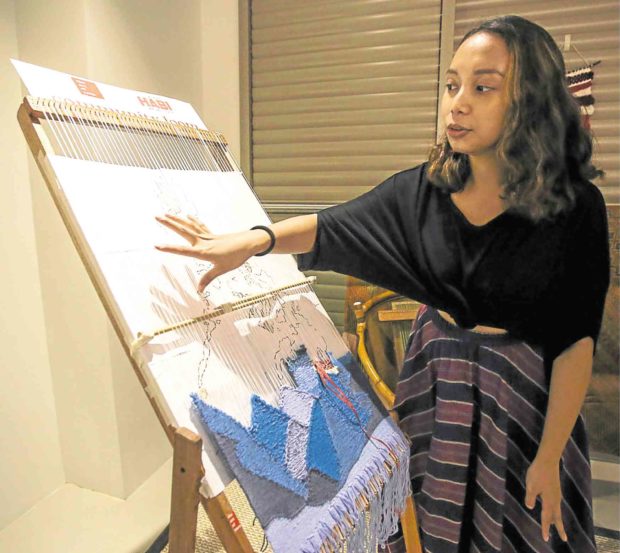Young entrepreneurs are now taking a keen interest in keeping dying traditions alive.
Paolo Palanca, 23, an Ateneo graduate, is using the knowledge acquired from his thesis to build a business.
Under the tutelage of anthropologist Fernando Zialcita, he and his classmates researched on the tambourine, the Spanish colonial necklace, and other traditional jewelry. For three weeks they stayed in Vigan, a Unesco World Heritage Site, met retired and active artisans, and even descendants of craftsmen.

Palanca was impressed with the detailed work of the pieces of fifth-generation craftsman called Mang Nelson. Zialcita advised Palanca to document Mang Nelson’s works.
Frustrated with the small earnings from his tambourine, Mang Nelsonplanned to become an OFW to support his family.
Palanca asked Mang Nelson if he would continue his craft if Palanca could sell his works. The artisan agreed.
With his savings, Palanca developed the brand Mana.ph inspired by heirloom pieces. It sold Mang Nelson’s jewelry online. It did well and last year, Mana.ph went into retail at Likhang Habi Market Fair. (See related story on this page.)
“Tambourine is considered woven gold. It has to be melted, turned into fine wire before it is manipulated. It is very intricate,” he says.
“People try to imitate it using machines but they can’t quite replicate the complexity of the fine details.”
The fair shoppers were familiar with tambourine, since this jewelry was worn by the generations of their mothers and grandmothers.
The prices range from P4,500 to P13,000 for earrings, bracelets and rings, depending on the design. Necklaces can fetch P40,000 to P200,000.
Palanca has invested the earnings back into the business and in reviving a dying craft.

Art of modern weaving
Self-taught weaver Judith Basco, 24, has developed her own style by incorporating various techniques and using synthetic and organic materials to produce interesting textures. Her business, The Art of Yarn, offers kits with portable looms, and conducts workshops on modern weaving techniques.
For Likhang Habi, she is producing a tapestry of the Philippine map. She will invite different weavers to fill in the provinces using their threads.
Basco drew inspiration from woven tapestries. She researched and developed her own materials. She worked with a carpenter to make her own loom.
“I can weave on my lap or on the table,” she says. “A kit costs P1,700 which includes cotton threads.”
Basco has worked with weavers to produce shoe insoles. She has also taught financial literacy and creative crafting to weavers in Buhi, Camarines Sur. The project is in partnership with the National Grid Corporation of the Philippines.
“Buhi has no yarns. Weavers buy sacks of retaso or cloth discards. They untangle the scraps to make their threads and yarns. Hence, their textiles have no clear colors and the process is long and arduous. I’m trying to connect them with Habi.”
Intramuros
The Manila Collectible Co (TMCC) is a destination for artisanal crafts in Intramuros. A nongovernment organization and social enterprise, it aims to sustain the weaving tradition.
“We want to promote 100-percent cotton. Our earnings go to weaving centers around the country,” says Virgie Nicodemus, TMCC production manager and community programs coordinator.
It resells raw fabrics and promotes its bestselling ponchos which fetch P3,000 each. Square blouses cost P1,600. Some styles are made of fabrics from Maguindanao with embroidery from Abra. —MARGE C. ENRIQUEZ, CONTRIBUTOR

